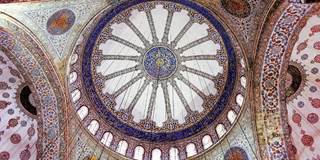The roots of the Middle East's many conflicts lie in the unraveling of the Ottoman Empire and the failure since then to forge a stable regional order. As the international community works toward securing a stable peace in the region, its leaders would be wise to remember the lessons of history.
LONDON – The roots of the Middle East’s many conflicts lie in the unraveling of the Ottoman Empire at the beginning of the twentieth century and the failure since then to forge a stable regional order. As the international community works toward securing a durable peace in the region, its leaders would be wise to remember the lessons of history.
The Ottoman Empire – which once stretched from Bihać in today’s Bosnia to Basra in Iraq – was a rich mosaic of intermingled cultures, traditions, and languages under the ultimate authority of the Sultan in Istanbul. It was remarkably stable, providing the region with a peaceful foundation for hundreds of years. But as it started to come apart, it did so violently.
It was in the Balkans that the process of carving out nation-states from the Ottoman mosaic began. And it was a process that kicked off two decades of devastating wars – the first at the beginning of the twentieth century, the second in the 1990s.

LONDON – The roots of the Middle East’s many conflicts lie in the unraveling of the Ottoman Empire at the beginning of the twentieth century and the failure since then to forge a stable regional order. As the international community works toward securing a durable peace in the region, its leaders would be wise to remember the lessons of history.
The Ottoman Empire – which once stretched from Bihać in today’s Bosnia to Basra in Iraq – was a rich mosaic of intermingled cultures, traditions, and languages under the ultimate authority of the Sultan in Istanbul. It was remarkably stable, providing the region with a peaceful foundation for hundreds of years. But as it started to come apart, it did so violently.
It was in the Balkans that the process of carving out nation-states from the Ottoman mosaic began. And it was a process that kicked off two decades of devastating wars – the first at the beginning of the twentieth century, the second in the 1990s.